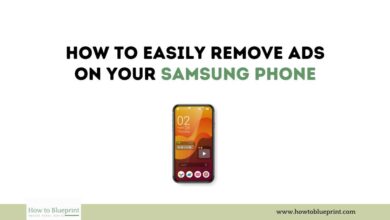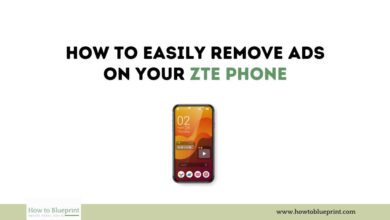
Transferring photos from your PC to your phone has become increasingly important in our digital age. Whether you want to share your memories with friends, ensure you have access to your favorite images on the go, or simply back up your files, there are multiple ways to accomplish this task efficiently. This guide will explore various methods, detailing each step to ensure you can seamlessly transfer your photos from your PC to your phone.
Why Transfer Photos from PC to Phone?
Before diving into the ‘how,’ let’s consider the ‘why.’ Here are a few reasons you might want to transfer photos from your PC to your phone:
- Accessibility: Access your photos anytime, anywhere, even when you’re away from your PC.
- Backup: Keep a backup of your photos on multiple devices to prevent data loss.
- Sharing: Easily share your photos with friends and family via social media or messaging apps on your phone.
- Editing: Use mobile photo-editing apps to enhance your images.
Methods to Transfer Photos from PC to Phone
There are several methods to transfer photos from your PC to your phone, each with its own advantages. Let’s explore the most common ones:
1. Using a USB Cable
Transferring photos using a USB cable is one of the most straightforward methods. Here’s how to do it:
For Android Phones:
- Connect Your Phone to the PC: Use a USB cable to connect your Android phone to your PC.
- Select File Transfer Mode: On your phone, select the “File Transfer” or “MTP” mode from the notification panel.
- Open File Explorer: On your PC, open File Explorer and navigate to your phone’s storage.
- Locate the Photos: Find the folder where your photos are stored on your PC.
- Copy and Paste: Copy the desired photos from your PC and paste them into your phone’s storage.
Troubleshooting Tips:
- Driver Issues: Ensure your phone drivers are up to date. If your PC doesn’t recognize your phone, reinstall the drivers.
- Cable Quality: Use a high-quality USB cable to avoid connection issues.
- Storage Permissions: Make sure you have granted the necessary permissions on your phone to allow file transfers.
For iPhones:
- Install iTunes: Ensure you have the latest version of iTunes installed on your PC.
- Connect Your iPhone to the PC: Use a USB cable to connect your iPhone to your PC.
- Trust the Computer: On your iPhone, you may be prompted to “Trust This Computer.” Select “Trust.”
- Open iTunes: Open iTunes on your PC and select your iPhone.
- Sync Photos: Go to the “Photos” tab and select “Sync Photos.” Choose the folder containing your photos and click “Apply.”
Troubleshooting Tips:
- iTunes Updates: Ensure you have the latest version of iTunes to avoid compatibility issues.
- Photo Formats: Make sure the photos are in a compatible format (e.g., JPEG, PNG) for seamless syncing.
- Storage Space: Check that your iPhone has enough storage space for the photos you are transferring.
2. Using Cloud Services
Cloud services offer a convenient way to transfer photos wirelessly. Popular cloud storage services include Google Drive, Dropbox, and iCloud.
Google Drive:
- Upload Photos to Google Drive: On your PC, open Google Drive and upload the photos you want to transfer.
- Download Google Drive App: Install the Google Drive app on your phone.
- Access Your Photos: Open the Google Drive app on your phone and download the photos to your device.
Detailed Steps:
- Upload: Drag and drop your photos into the Google Drive interface on your PC.
- Organize: Create specific folders to keep your photos organized.
- Download: Select multiple photos at once to download in bulk on your phone.
Troubleshooting Tips:
- Internet Connection: Ensure a stable internet connection for both uploading and downloading.
- Storage Limits: Keep track of your Google Drive storage limit to avoid running out of space.
- Sync Issues: If photos aren’t syncing, try refreshing the app or logging out and back in.
Dropbox:
- Upload Photos to Dropbox: On your PC, open Dropbox and upload the photos.
- Download Dropbox App: Install the Dropbox app on your phone.
- Access Your Photos: Open the Dropbox app on your phone and download the photos to your device.
Detailed Steps:
- Upload: Use the Dropbox web interface or desktop app to upload your photos.
- Organize: Categorize photos into folders for easy access.
- Download: Use the “Select All” feature to download multiple photos at once on your phone.
Troubleshooting Tips:
- Internet Speed: Ensure you have a fast internet connection for efficient uploads and downloads.
- Space Management: Regularly clean up your Dropbox to manage storage effectively.
- Sync Problems: Check for updates to the Dropbox app if you experience syncing issues.
iCloud (for iPhone users):
- Upload Photos to iCloud: On your PC, open iCloud.com and upload the photos to iCloud Drive.
- Enable iCloud Drive: On your iPhone, go to “Settings” > [Your Name] > “iCloud” > “iCloud Drive” and ensure it’s enabled.
- Access Your Photos: Open the Files app on your iPhone and navigate to iCloud Drive to download your photos.
Detailed Steps:
- Upload: Drag and drop photos into iCloud Drive on your PC.
- Organization: Use folders to organize photos for easy retrieval.
- Download: Use the Files app on your iPhone to access and download photos.
Troubleshooting Tips:
- iCloud Storage: Monitor your iCloud storage to ensure you have enough space.
- Photo Quality: Ensure iCloud settings are set to download photos in original quality.
- Sync Settings: Check iCloud sync settings if photos are not appearing on your iPhone.
3. Using Email
Email is a simple method for transferring a small number of photos. Here’s how to do it:
- Compose an Email: On your PC, open your email client and compose a new email.
- Attach Photos: Attach the photos you want to transfer to the email.
- Send Email to Yourself: Send the email to your own email address.
- Access Email on Phone: Open the email on your phone and download the attached photos.
Detailed Steps:
- Attachment Size: Ensure your email provider allows the attachment size of your photos.
- Multiple Emails: For larger batches of photos, you may need to send multiple emails.
- Organization: Label emails or use subject lines to keep track of different batches of photos.
Troubleshooting Tips:
- Attachment Limits: Check your email provider’s attachment size limit.
- Download Issues: If attachments won’t download, try using a different email app.
- Spam Folder: Ensure the email doesn’t end up in your spam or junk folder.
4. Using Bluetooth
If your PC and phone both support Bluetooth, you can use it to transfer photos wirelessly.
For Android Phones:
- Enable Bluetooth on Both Devices: Turn on Bluetooth on your PC and your phone.
- Pair the Devices: On your PC, go to Bluetooth settings and pair it with your phone.
- Send Photos: Right-click on the photos you want to transfer on your PC, select “Send to” > “Bluetooth device,” and choose your phone.
- Accept the Transfer: On your phone, accept the incoming file transfer request.
Detailed Steps:
- Enable Discoverability: Make sure both devices are discoverable.
- Pairing Code: Confirm the pairing code on both devices to establish a secure connection.
- Transfer Confirmation: Accept the transfer request on your phone to start the file transfer.
Troubleshooting Tips:
- Connection Issues: Ensure devices are within close range for a stable connection.
- Interference: Minimize interference from other Bluetooth devices.
- Restart Devices: Restart both devices if the Bluetooth connection fails.
For iPhones:
Bluetooth transfer is not typically supported for iPhones. Use other methods like iCloud, email, or third-party apps.
5. Using Third-Party Apps
There are numerous third-party apps available that facilitate the transfer of photos between your PC and phone. Some popular options include AirDroid, SHAREit, and Xender.
AirDroid:
- Install AirDroid: Download and install AirDroid on both your PC and phone.
- Create an Account: Sign up for an AirDroid account and log in on both devices.
- Transfer Photos: Use AirDroid to transfer photos wirelessly between your PC and phone.
Detailed Steps:
- Setup: Complete the setup process on both devices.
- Connection: Use the same Wi-Fi network for faster transfer speeds.
- Transfer Interface: Use the AirDroid interface to select and transfer photos.
Troubleshooting Tips:
- Network Stability: Ensure a stable Wi-Fi connection for uninterrupted transfers.
- App Permissions: Grant necessary permissions for AirDroid to access photos.
- Compatibility: Check compatibility if using older devices.
SHAREit:
- Install SHAREit: Download and install SHAREit on both your PC and phone.
- Connect Devices: Open SHAREit on both devices and connect them using the app.
- Transfer Photos: Select the photos you want to transfer and send them using SHAREit.
Detailed Steps:
- Connection Setup: Use the QR code or manual setup to connect devices.
- File Selection: Select multiple photos for batch transfer.
- Transfer Speed: Enjoy fast transfer speeds due to direct device-to-device connection.
Troubleshooting Tips:
- App Updates: Ensure both devices have the latest version of SHAREit.
- Connection Issues: Reconnect devices if the connection drops.
- File Format: Ensure photos are in a supported format for transfer.
Additional Tips for Transferring Photos
- Organize Your Photos: Before transferring, organize your photos into folders to make it easier to find them on your phone.
- Check Storage Space: Ensure your phone has enough storage space to accommodate the transferred photos.
- Maintain Quality: Choose a transfer method that maintains the original quality of your photos.
- Use Reliable Apps: When using third-party apps, choose reputable ones to avoid security risks.
- Backup: Always keep a backup of your photos in case something goes wrong during the transfer process.
- Regular Transfers: Make a habit of transferring photos regularly to keep your phone’s photo library up to date.
- Security: Use secure transfer methods and apps to protect your data.
Conclusion
Transferring photos from your PC to your phone is a straightforward process, with multiple methods available to suit different needs and preferences. Whether you prefer using a USB cable, cloud services, email, Bluetooth, or third-party apps, each method offers a reliable way to get your photos onto your phone. By following the steps outlined in this guide, you can easily transfer your photos and enjoy them on your mobile device anytime, anywhere.





